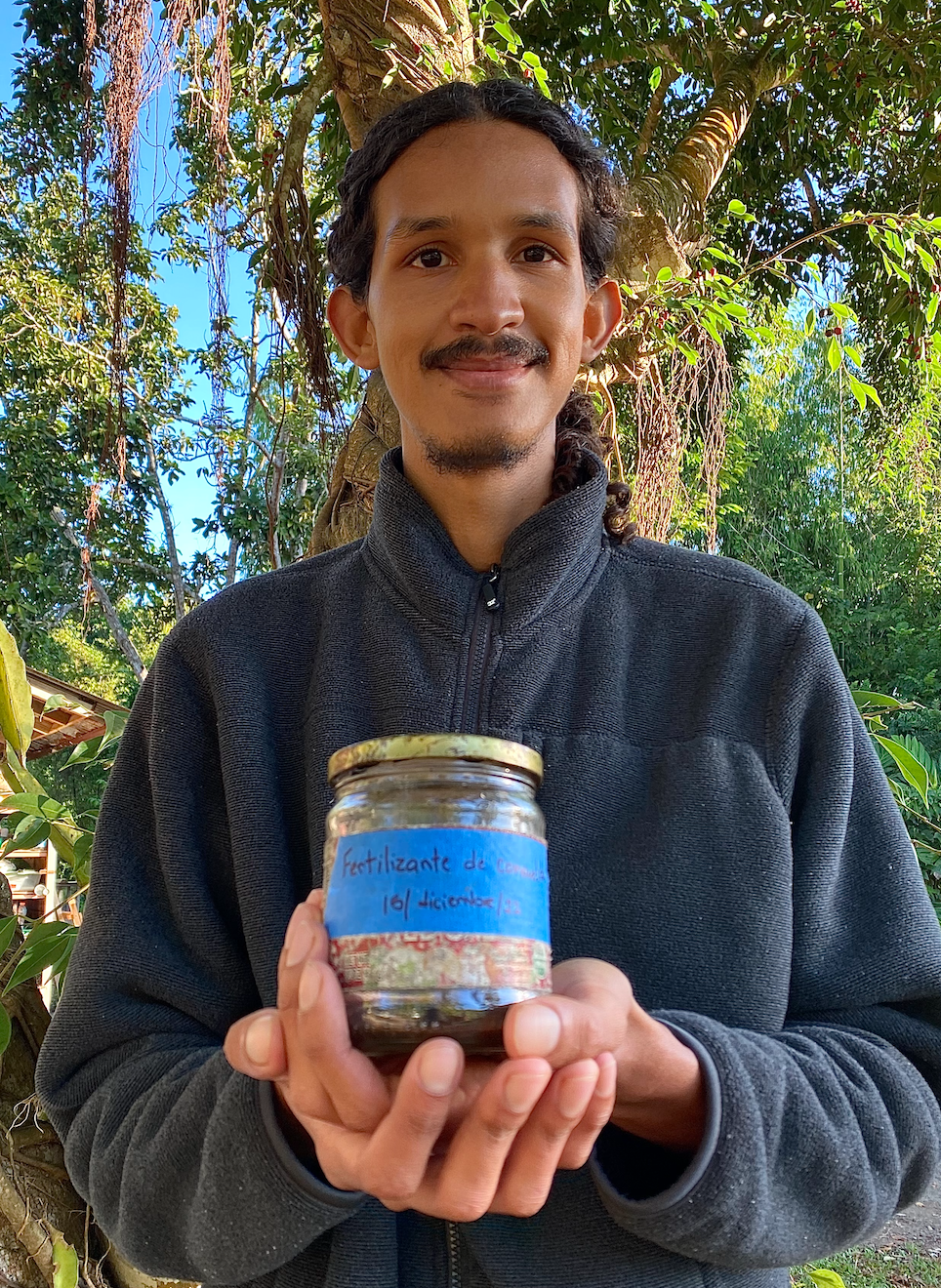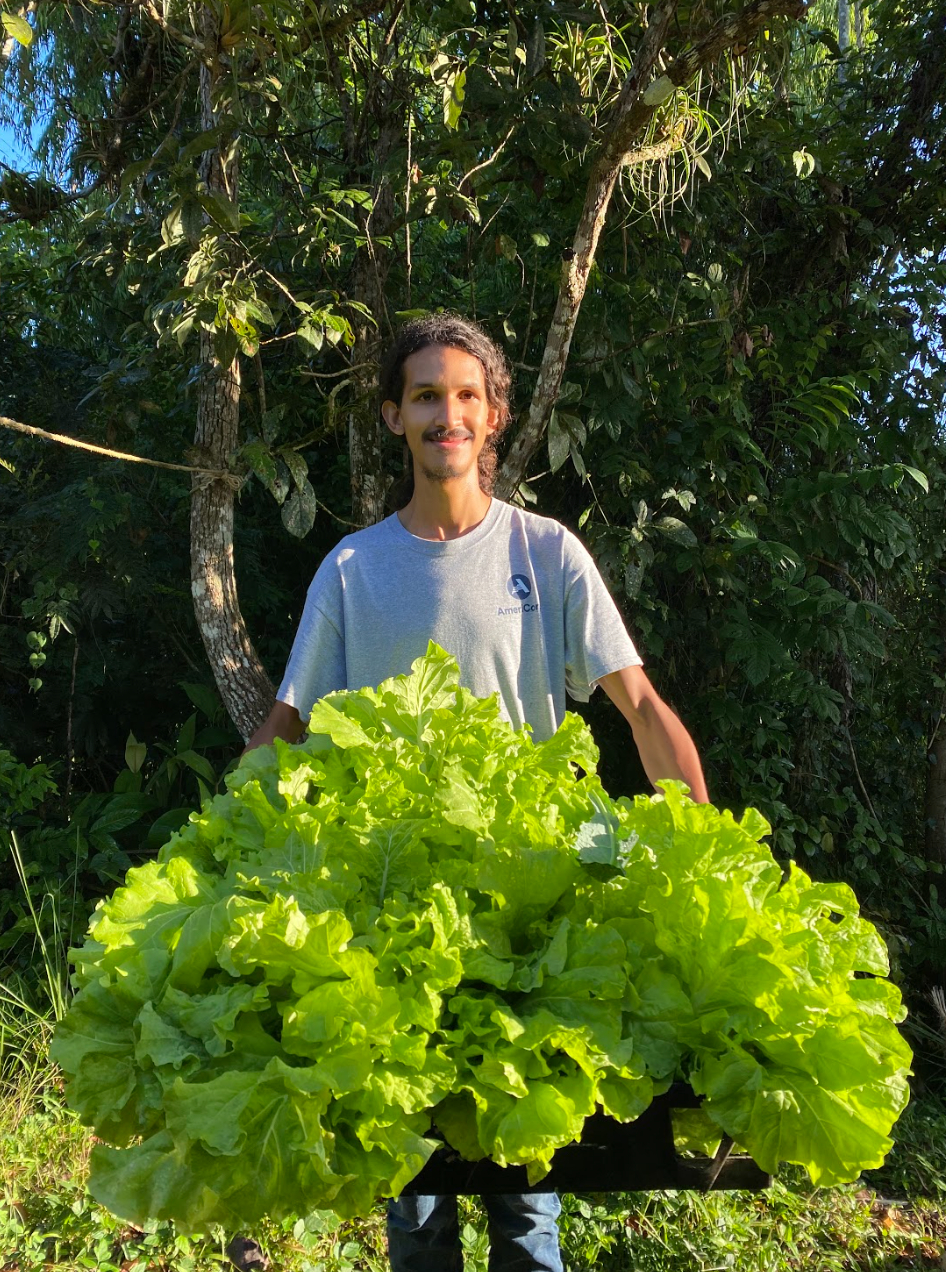Restoring Degraded Soil with Comfrey Bioferment
In a single handful of fertile soil, there are more living organisms than there are people living on the planet.
I think it's fascinating how complex and vital soil is for sustaining life on planet Earth. It abounds in organic matter, mycorrhizae, arthropods, nematodes, bacteria, earthworms, fungi, plants and animals - all of which maintain a continuous cycle of nutrients. When the soil is healthy and biodiverse, it allows us to grow the food necessary for a healthy diet. However, the amount of fertile soil in Puerto Rico has been decreasing at an alarming rate.
Soil degradation is a process triggered by natural and human perturbations that put ecosystems at risk in their capacity to sustain and feed communities over time. Some examples of degradation processes are erosion, deforestation, pollution, desertification or earth movement.
Agriculture is one of the activities with the largest impact on soil health, which is why it is important to incorporate soil restoration systems in our agricultural planning.
Microbial activity is nearly absent in degraded soils, while in fertile soils microbes are abundant and in charge of decomposing organic matter, regulating exchange processes between the soil and plants. The predominant gas in the atmosphere is nitrogen, however in its gaseous state it is not accessible to plants. Some microorganisms possess the enzyme nitrogenase which can break the triple bond in atmospheric nitrogen, fixing it to the soil. Nitrogen is an essential macronutrient for plants, as it allows their formation of cells and tissues. Microbes transform complex substances into simple organic compounds that plants can use, thus optimizing their development and growth.
Applying bioferments to our crops is a mechanism that increases healthy microbial activity in the soil.
At Plenitud PR, we learned how to prepare comfrey bioferment thanks to Don Luis - a farmer at Finca Mi Casa in Camuy with many years of experience in agroecology - who shared his recipe with us. Bioferments are prepared through the fermentation of organic matter, which allows the presence of microorganisms that make available minerals, vitamins, amino acids and organic acids, contributing to the restoration of the soil’s biological balance.
Comfrey (Symphytum officinale)
Comfrey (Symphytum officinale) is a perennial plant native to Europe which grows in all temperate or tropical zones, thrives in wet or marshy habitats, and commonly reproduces by root division. Comfrey’s name derives from a Greek word meaning “to join,” attesting to its use in traditional medicine to mend broken bones and heal wounds. Comfrey is used for the bioferment because it is a good nutrient bioaccumulator.
Fermented comfrey leaves are rich in amino acids, vitamins, oligoelements and active enzymes. They contribute nitrogen, potassium, calcium, boron and phosphorus to the soil. They provide tolerance to stress, good cell development, photosynthetic efficiency, enhance calcium absorption, and increase pH when used consistently. Comfrey bioferment not only adds fertility to the soil, but it also serves as a pest repellent and provides beneficial microorganisms for the soil.
So, how do you prepare and use a comfrey bioferment?
Check out this recipe and step-by-step instructional video to learn!
Ingredients and Materials
Scissors
1 pound of comfrey leaves
Medium sized container
1 pound of organic brown sugar
Cylindrical and deep glass container
Pot, stone, glass bottle or object to create pressure
Paper towel
Elastic band
Tray or flat container
Strainer
Chlorine-free rainwater
Procedure
Steps 5 & 6: Using a weighted object, submerge the comfrey leaves under the liquids and cover with a paper towel.
With scissors, harvest 1 pound of comfrey leaves and flowers, preferably in the morning while dew is still on their surface (assuming it has not rained overnight).
Cut the leaves and flowers into small ½ inch pieces and place into a medium sized container.
Add ½ pounds of brown sugar to the container with the chopped leaves and mix well.
Take a deep and cylindrical glass container and add sugar and a handful of the mixed leaves, press them down with a pot so that it is a compact layer. Macerate the ingredients until the leaves release their liquid. Repeat this step in several layers until all of the leaf mixture is finished.
The container will begin to fill with the liquid released by the leaves. This will happen between 15 minutes to 2 hours. Place a heavy object on top of the leaves until they are completely submerged in the liquid.
Cover the container with a paper towel and secure it to the container with a rubber band.
Let the bioferment rest in a dark and cool place for 7 days. To avoid ants you can place the container on a tray or flat container with water.
To collect the bioferment, place a strainer over another container and pour the bioferment over the strainer. Let it drain for 1 day. Avoid touching or moving the container so as to not affect the microbial activity. Bottle the liquid bioferment in a dark and clean bottle. This ferment can be stored for one year.
To spray, dilute 1 teaspoon of the concentrate in 1 gallon of water.
Spray your plants with the comfrey bioferment to add fertility to the soil and repel pests.








